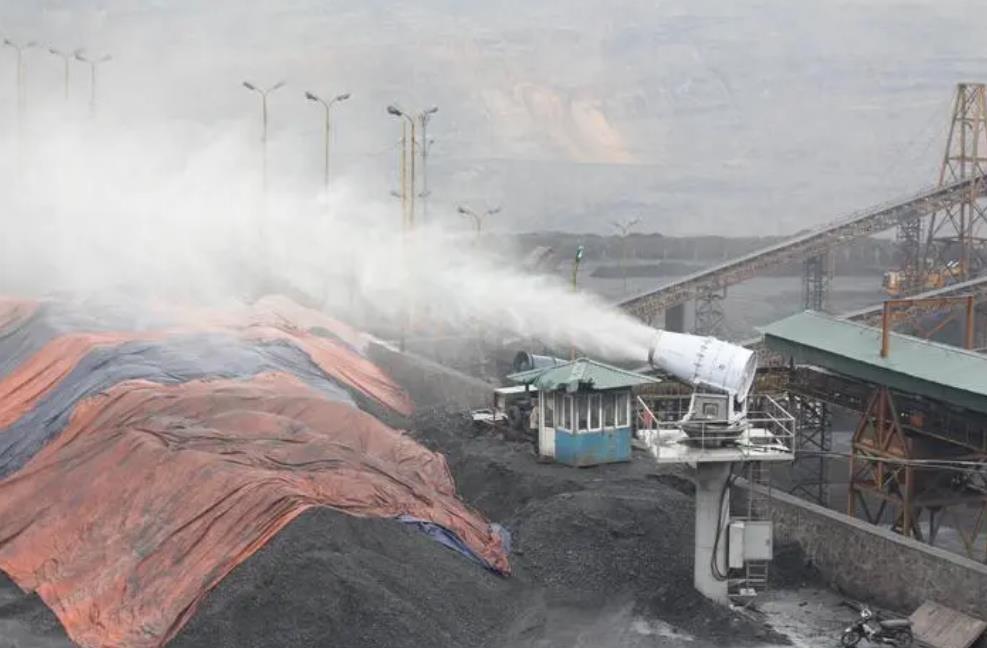
The development of jet surface waves and the perturbation of gas by circular jet or liquid film jet involves the formation and development theory and aerodynamics of jet surface waves, which will cause the jet liquid to break into sheets, lines, large particle droplets, and eventually small particle droplets.
The geometry of the fog nozzle, the flow characteristics inside the fog nozzle, the difference between the injection pressure and the ambient gas back pressure, the properties of the gas medium and the physical properties of the liquid itself are crucial for determining the distribution of the shape, cone Angle, penetration, droplet size and velocity of the fog gun over time and space. These factors do not exist independently, but interact and complement each other, and ultimately determine the effect of atomization.
The research on the mechanism of fog cannon has always been one of the difficulties in fog cannon science and has not yet been perfected. The establishment of physical and mathematical models requires researchers to have solid knowledge of fluid mechanics and mathematics. The correct determination of various boundary conditions and the rigor of mathematical derivation are very demanding, and sometimes even need to be repeatedly discussed before progress can be made.
According to the shape and characteristics of the spray, the fog nozzle can be divided into many types, each fog nozzle has its specific purpose and atomization characteristics. The more typical fog nozzle is the flat-hole fog nozzle, which is widely used in the combustion chamber of automobiles, aircraft and rocket engines. The circular jet formed by the flat hole fog nozzle is ejected at high speed under high injection pressure, and is broken by the disturbance of the air flow. As long as the wavelength of the surface wave of the liquid circular jet is close to twice the diameter of the circular jet, the disturbance of the air flow will cause the circular jet to break. However, the turbulent circular jet can be broken only by its own turbulent pulsation without any external force. Once the liquid leaves the fog nozzle, the fog nozzle wall no longer controls the circular jet, and the liquid will be directly affected by its own surface tension. When the liquid overcomes its own surface tension, the circular jet breaks apart. The liquid reaches a new equilibrium in the form of small sheets, lines, or droplets of particles, and as soon as the liquid overcomes the surface tension again due to perturbations by itself or by the gas, it breaks further into finer particles.

The viscosity of liquid inhibits the growth of circular jet instability and delays the process of liquid fragmentation, so that atomization occurs in the downstream region where the velocity of gas and liquid is low. In most cases, the turbulence of the liquid, the cavity of the fog nozzle, the increase of the ambient gas density and the aerodynamic action are all favorable for atomization. The fog nozzle that can produce the liquid film jet atomizes the liquid and makes the liquid and gas fully mixed. Planar film jets are usually produced by high-pressure liquid passing through a slit, such as a fan fog nozzle, which is used in the garment industry and in small annular gas turbine combustion chambers.
Annular liquid film jet is produced by high-pressure liquid passing through an annular slit, such as the needle fog nozzle in the pressure fog nozzle and the pre-film fog nozzle in the jet fog nozzle, which are respectively used in diesel engine and gas turbine. Or produced by a turntable or cup, called a turntable fog nozzle and a cup fog nozzle, respectively, for atomizing drying, atomizing cooling and agricultural irrigation. These fog nozzles require a certain injection pressure or rotational centrifugal force in order to produce a certain injection speed. Once the liquid film jet is formed, its initial hydrodynamic stability will be destroyed by the aerodynamic disturbance. With the expansion of the liquid film jet away from the fog nozzle, the thickness of the liquid film jet will gradually increase, causing it to break into liquid lines and eventually droplets. If the injection pressure is large enough, the liquid will atomize into fine particles at the exit of the fog nozzle, and there is no linear transition zone.
In addition, the initial thickness of the liquid film jet, the relative velocity with the ambient gas, the viscosity of the liquid and the surface tension are also important factors that determine the size range and average diameter of the atomized droplets. There is a high relative speed between the liquid sprayed by the jet fog nozzle and the ambient gas, and the liquid movement speed is slow, while the jet air speed is fast and the flow rate is large. The basic mechanism is that the low-viscosity liquid is ejected by the low-pressure fog nozzle with the high speed jet, and the surface wave of the liquid film jet breaks and atomizes due to the disturbance of the high speed jet stream.
The above is to share with you about the fog gun atomization process of the relevant content, I hope that through the above content, you can have a further understanding and understanding of the fog cannon machine.


